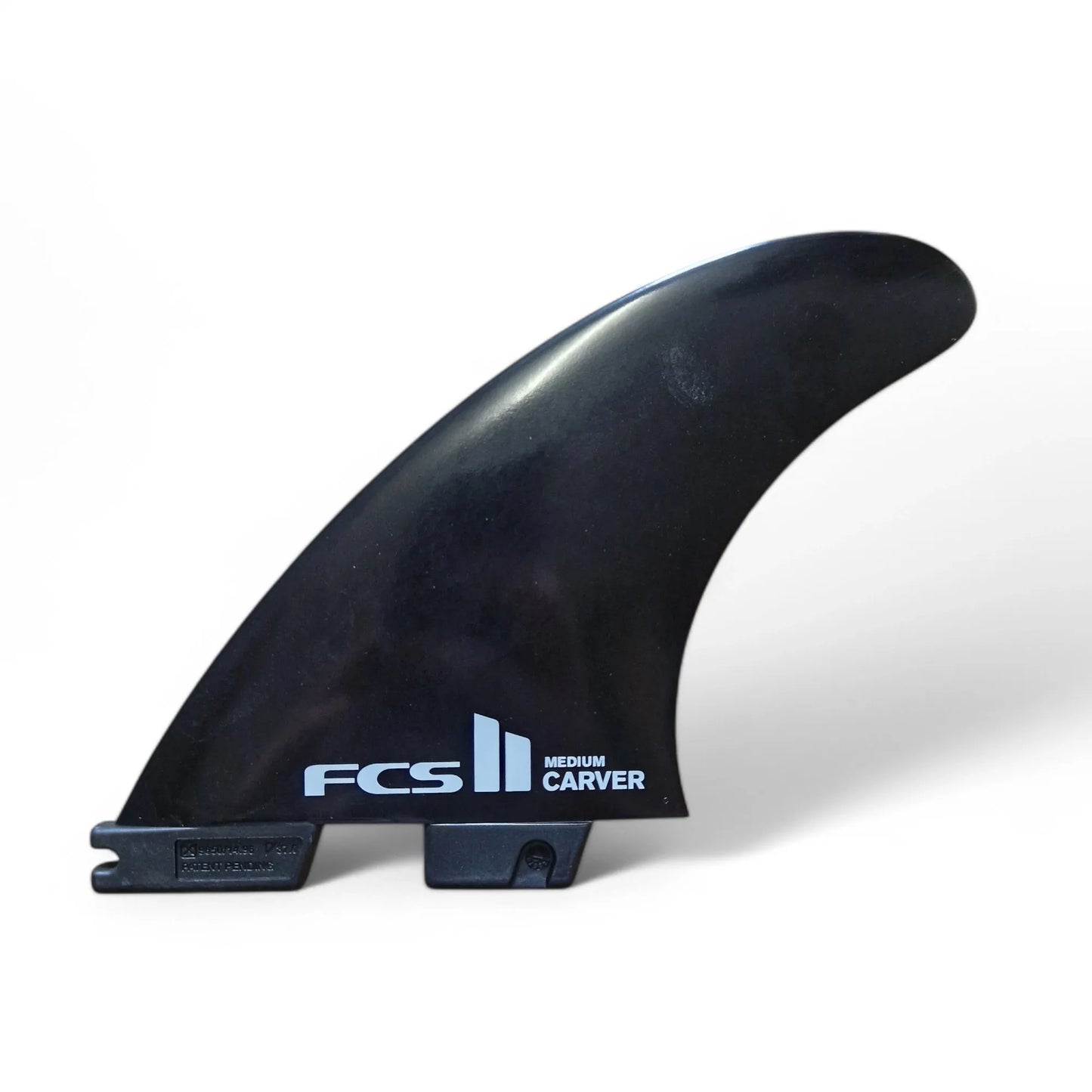FCS II Carver Glass Flex Tri Fin Thruster Set Medium
FCS II Carver Glass Flex Tri Fin Thruster Set Medium
Out of stock
Couldn't load pickup availability
FCS II Carver Glass Flex Tri Surfboard Fin Thruster Set Medium
Powerful, drawn-out turns. Excels on open face waves. Carver Glass Flex Surfboard Fin.
Check out our full range of fins here
Overview
- Designed for powerful, drawn-out turns with added hold.
- Elongated template with high degree of sweep provides exceptional hold off the bottom and when carving on the open face.
- Ideal for power surfers who like to push hard against their fins and draw out their turns.
Ideal Conditions
- Open face, down-the-line waves, particularly good in point and reef breaks.
Board Types
- Designed to fit the FCS II Fin System.
- Recommended for boards with deep concaves and moderate-to-extreme rocker.
Fin Family
- Carver: Find Power. Powerful, drawn-out turns with added hold.
Who Are FCS?
FCS (Fin Control System) revolutionized surfboard fins in the 1990s. Before FCS, most fins were permanently glassed onto boards. This limited customization and travel convenience. FCS introduced a removable fin system, allowing surfers to change fins easily. This innovation gave surfers more control over performance in different wave conditions.
The Birth of FCS
The concept emerged in Australia in the early 1990s. Brian Whitty, an Australian engineer, developed the first removable fin system. He wanted a system that allowed surfers to swap fins without damaging the board. In 1995, FCS launched commercially and quickly gained popularity. The system became the industry standard within a few years.
How FCS Fins Work
FCS fins use a twin-tab connection system. Two small tabs on each fin fit into plugs on the surfboard. Screws secure the fins in place, allowing easy removal or adjustment. This system lets surfers experiment with different fin setups. It also makes transporting surfboards easier by removing the fins.
Evolution and Innovation
Since its launch, FCS has continually improved its designs. In 2013, FCS introduced the FCS II system. This updated version allows fins to be inserted and removed without screws. The new system enhances speed, convenience, and performance. FCS also collaborates with top surfers to develop high-performance fin templates.
Impact on Surfing
FCS fins changed the way surfers approach board design and performance. The ability to customize fin setups improves maneuverability, speed, and stability. Professional surfers rely on FCS for high-performance surfing. Many world champions, including Kelly Slater and Mick Fanning, have used FCS fins.
FCS Today
FCS remains a leading brand in surfboard accessories. They offer a wide range of fins for different surf styles and conditions. The brand also produces traction pads, leashes, and board bags. Their commitment to innovation keeps them at the forefront of surf technology.
Conclusion
FCS surfing fins transformed the sport by introducing removable, customizable fins. The brand continues to innovate, shaping modern surfing performance.
How Does A Surfboard Fin Work?
A surfboard fin is a crucial component of a surfboard, providing stability, control, and maneuverability. It is typically located at the tail of the board and plays a vital role in how a surfer navigates waves. Surfboard fins work by helping to direct the flow of water around the board, allowing the surfer to carve and turn smoothly.
When a surfer rides a wave, the fin resists lateral movement, preventing the board from sliding sideways. The fin helps to maintain the board’s tracking, allowing it to move in a straight line. It also provides resistance to the forces acting on the board, which helps the surfer stay balanced.
The shape and size of the fin influence how the board behaves in the water. Larger fins provide more stability and control, while smaller fins offer greater maneuverability. Fins with more surface area are better at holding a line in larger waves. On the other hand, smaller fins allow for quick turns and faster response.
The material of the fin also affects performance. Most fins are made from fiberglass or plastic. Fiberglass fins are more rigid, offering better control and stability. Plastic fins are more flexible and provide a softer feel, which is preferred by some surfers in smaller waves.
There are various types of fins, including single, twin, thruster, and quad setups. Each type has a different arrangement of fins, which impacts the board’s handling and maneuverability. For example, a thruster setup has three fins: one at the center and two on the sides. This configuration provides a balance of stability and control while offering responsive turns.
In summary, surfboard fins are essential for controlling the board and enhancing performance on waves. The right fin setup can make a significant difference in how a surfer rides.
Share










